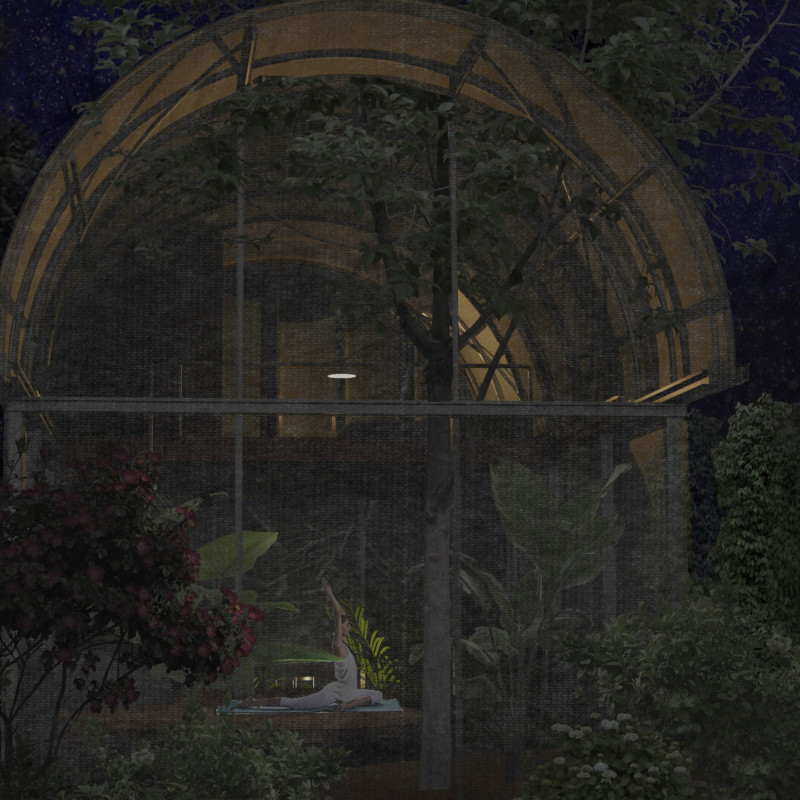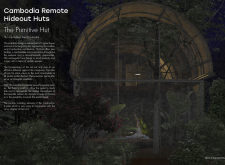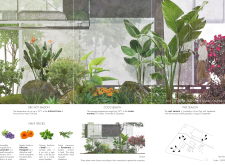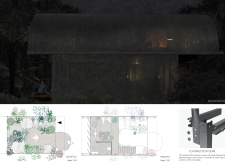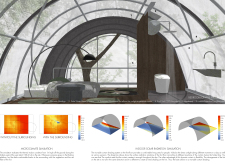5 key facts about this project
Cambodia Remote Hideout Huts, particularly The Primitive Hut, is located in the rural area of Kep, Cambodia. The design aims to create a space that emphasizes connection with the environment while providing comfort and shelter. With its simple rectangular form, reminiscent of a greenhouse, the structure merges functionality with an appreciation for the natural surroundings.
Design Philosophy
The design focuses on transparency and the experience of nature. A netting structure acts as a barrier against insects while allowing clear views of the countryside. This feature encourages occupants to engage with their surroundings, enhancing the sense of openness within the hut. The layout promotes tranquility, reflecting the peaceful qualities of the rural landscape.
Climate Adaptability
Adapting to Cambodia’s diverse climate is central to the design. The hut effectively addresses the dry season, during which temperatures can soar to 35°C. It remains comfortable in cooler months, with average temperatures around 24°C. A floating platform extends the living space outdoors, offering a place for meditation and interaction with nature, while careful spatial arrangement helps manage thermal comfort.
Sustainable Practices
Sustainability is a key component of the design. The use of local plant species contributes to natural pest control. Plants such as Lavender, Mexican Marigold, Basil, and Rosemary have been selected for their ability to repel mosquitoes. This choice connects the hut more deeply to its surroundings and promotes well-being by incorporating elements of nature into daily life.
Construction and Materials
The structure primarily uses steel, chosen for its lightweight yet durable qualities. Simple hinge joints connect beams to columns, making assembly straightforward. This method allows local labor to participate in the construction, fostering community involvement. Interior features like movable shading systems and a solar water heating solution support sustainable living and reduce reliance on traditional energy sources.
Translucent membranes in the design allow natural light to filter through, creating inviting spaces inside. Movable elements further control heat gain, enhancing the comfort of the occupants.


